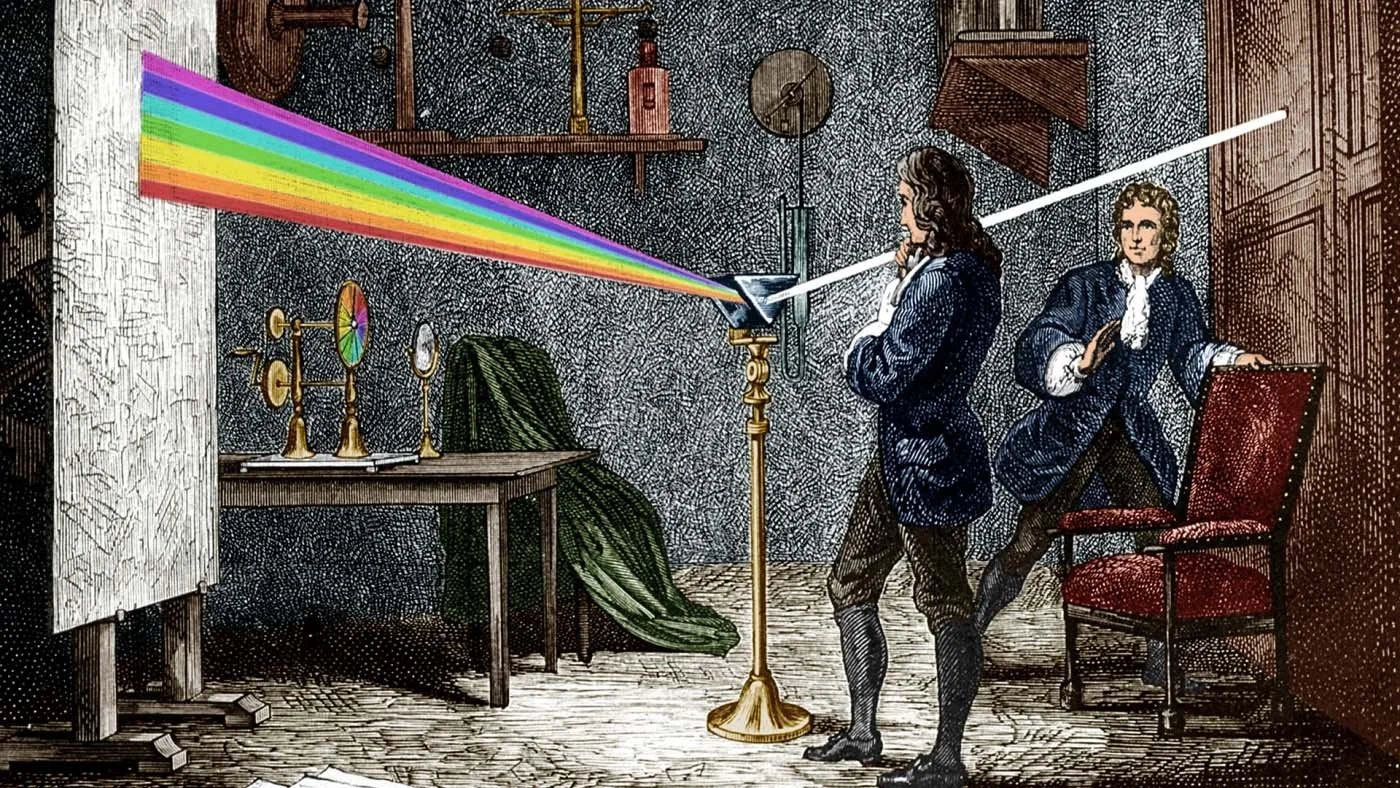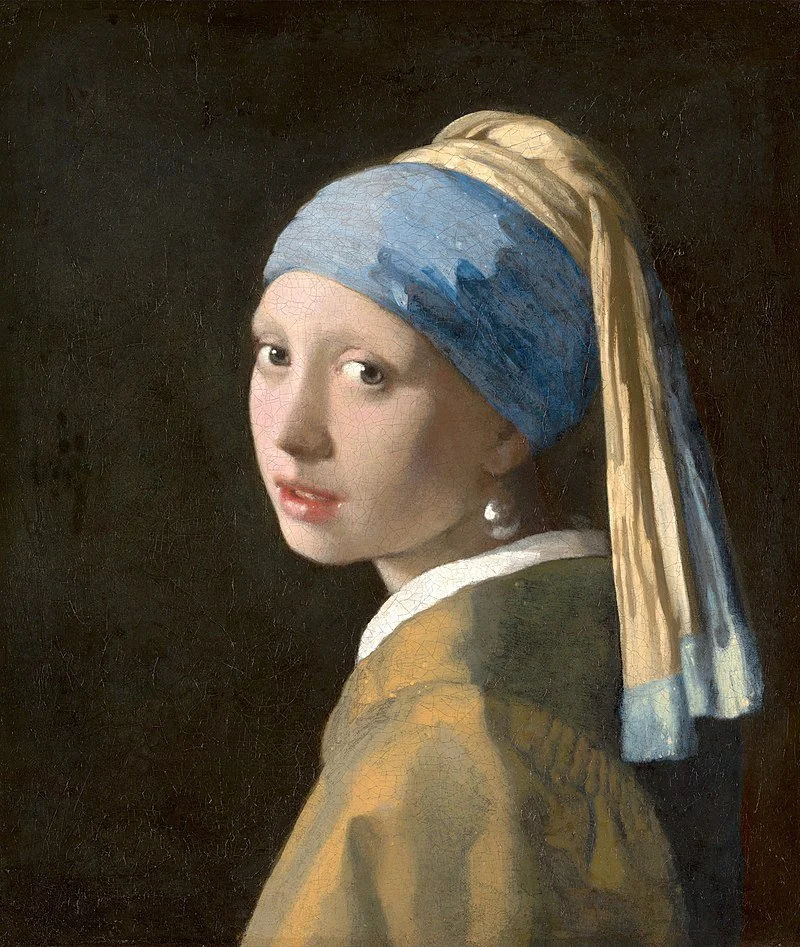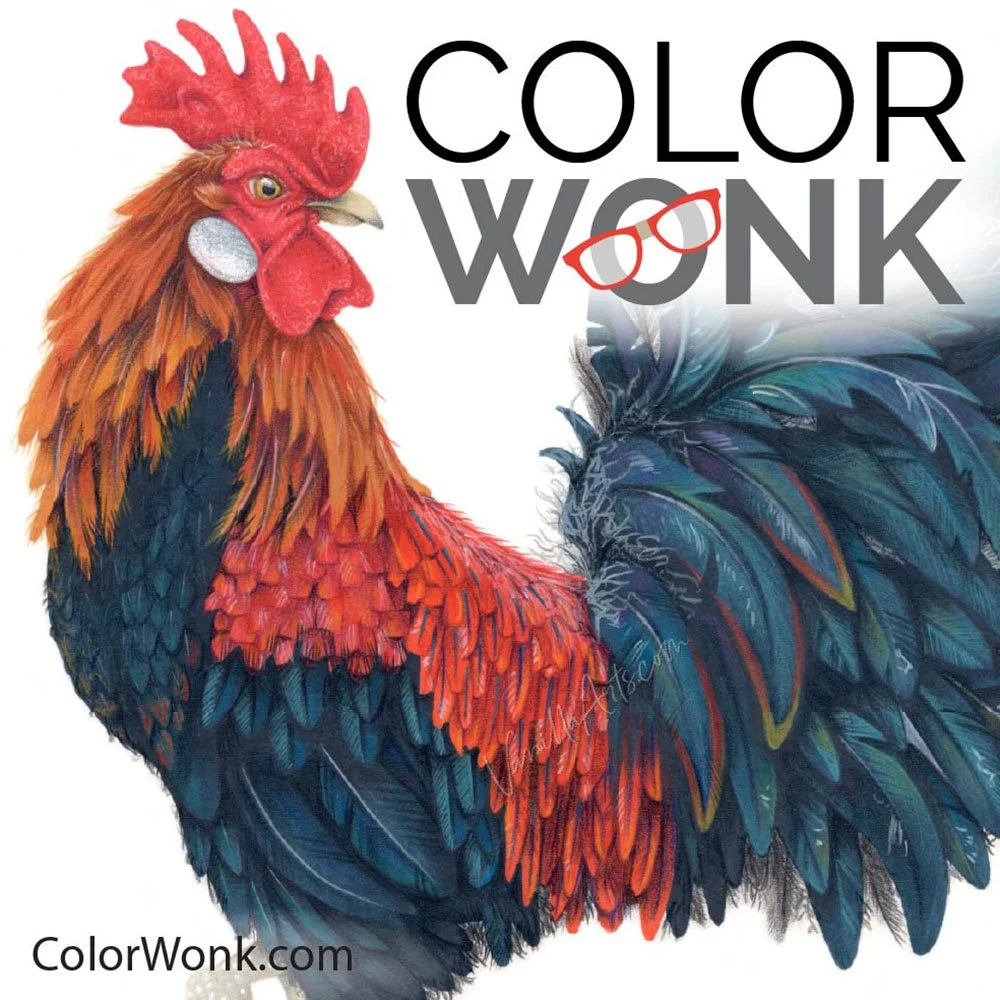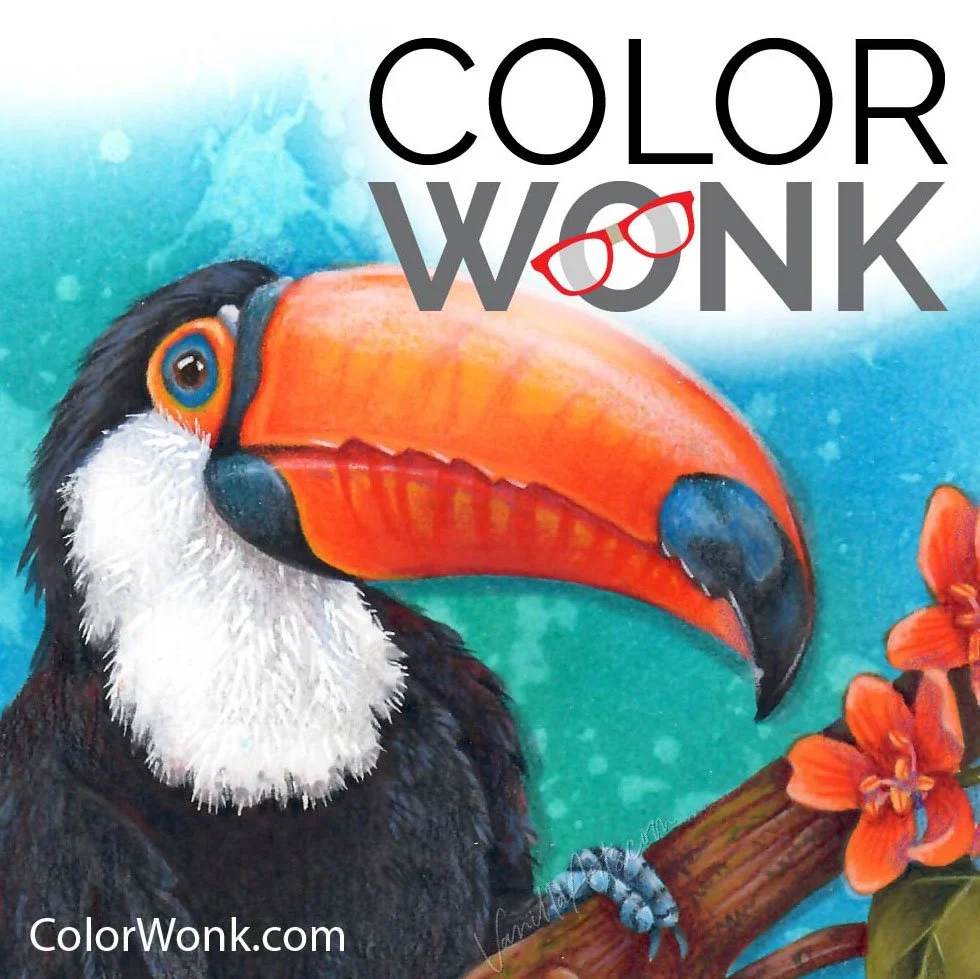Do, Re, Mi, Blue, Indigo, Purple
Thanks for taking the jump to read today’s newsletter. If you landed on this page by accident, subscribe to the Vanilla Beans Newsletter here.
Today’s article is a refresh…
But let’s face it, many of you weren’t here when it ran the first time, so if I hadn’t ‘fessed up, you’d never know.
I’ve been getting a ton of questions about color theory recently, most are questions I’ve already written about before. I could re-write everything but in the case of today’s topic, I really like the original.
Why mess with what works?
So please enjoy Newton’s Folly.
Sometimes it’s not what you know…
It’s why you know it.
I’ve got a question for you: when did you first learn about the color wheel?
My dad saved every scrap of paper that came through the front door. In the bottom of an old file cabinet, I found a fingerpainted color wheel with AMX scribbled on the back. I think it was from kindergarten.
My spelling isn’t much better today but I did finally master my name.
Next question:
Why were you taught the color wheel?
Ahhh, here’s a dirty secret— color wheels are government mandated.
Federal education standards require that art curriculum include testable concepts. Schools can’t just hand you a bucket of broken crayons.
Early color theory instruction is why you know red + yellow = orange. You rattling off a bunch of recipes from memory means you’re learning lots about art.
I also vividly remember this video from Sesame Street which is another product of government education.
I have great respect for school teachers but… even the best teachers must admit: non-artists teaching color theory is not a good idea.
Which is why most of what you know about color theory is wrong.
Where were you in 1704?
For those who weren’t around yet, 1704 was a banner year for art education. That’s when the first color wheel was published.
Thank you, Sir Issac Newton.
Newton’s “color circle” is basically the same wheel we colored in elementary school. Same colors in the same spots. Roy G Biv and all that jazz.
The only thing that’s different is they’ve removed the music notes.
Yep, you read that right. I said music notes.
See the letters A, B, C, etc between each color?
Newton may have been a genius but he also had some weird ideas. He tried for years to connect the color wheel to the music scale. Instead of do-re-mi, Newton sang blue-indigo-violet. His goal was to use music chords to create harmonious color palettes for art, home, and fashion.
I kid you not, the man coordinated his daily outfits to major chords on a harpsichord.
Maybe he wore minor chords for funerals?
Newton was a bachelor and really needed a wife to doink him upside the head sometimes.
Okay, so the wheel you colored in first grade is a Newtonian wheel.
Can you think of anything else you’re using today that hasn’t changed since 17 freakin’ 04?
Anything?
Psssttt… at this point, you should be highly skeptical of US art curriculum.
Now fast forward to the 2000’s when my Stampin’ Up lady helpfully explained that the three primary colors are Pineapple Punch, Blueberry Bushel, and Poppy Parade.
Stop an average Joe on the street and he’ll tell you the three primaries are red, yellow, and blue. Joe doesn’t know it but RYB is based on Newton’s original 1704 Opticks circle.
Anyone who learned color catechism will tell you the primaries are primaries because you can’t mix two colors together to create red…
And yet your home office printer mixes red every darned day.
Folks, this is what the map of Michigan looked like in 1704.
So maybe the old Red-Yellow-Blue color wheel was a little wrong too?
Now I’m not knocking Newton…
Okay, maybe I am knocking him a little bit, but only because of the music thing…
The problem was, Newton was working way back in 17-OMG-4 with sunbeams and hole in the wall.
I don’t care how smart you are, you can’t see what you can’t see.
What Newton couldn’t see was magenta and true purple. He also missed a funny little color called cyan. You can’t blame him, really. Pink and purple (basically the entire RV Copic family plus the V-Zeros and V-Nineties) are “extra-spectral” colors.
Extra-spectral means “off the charts”
Now I could go into a long explanation about the rods and cones in your eyeball which determine what you can see versus the stuff you trip over at night… but the gist of the story is that even on a good day, it’s pretty darned hard to see the pink and purple parts of a rainbow.
Newton was also a left handed male with a high IQ and there’s a slight correlation between that and being somewhat color blind…
Which may explain why he missed the gigantic cyan stripe in the middle of the spectrum.
Cyan?
Yes. You’d call it light blue but it’s not light and it’s not blue. It’s cyan. The color of the sky. Cyan is everywhere but nobody knows the name. Cyan is B04.
And remember, Newton was working hard on that music thing. So he deliberately limited the colors on his wheel to the match the music scale.
Plus, Newton was English and the inclusion of indigo on his color wheel was likely a political decision. Indigo was vital to the British economy at the time but artistically, it’s a forgettable blip on the color spectrum.
Anyway, all of this is to say:
If you’re using a Newtonian wheel with yellow, red and blue in primary positions or if you’re using a wheel which doesn’t have magenta or cyan at all?
Burn the wicked thing and beg your priest for an exorcism.
We know better now.
The reason why red + blue makes a color I can only describe as shark vomit is because Newton’s theory works with light but doesn’t actually work with any art supplies.
Red paint isn’t a primary. Red = magenta + yellow.
Blue paint isn’t a primary. Blue = cyan + magenta.
When you use a Newtonian color wheel from 1704…
Remember, that’s the 18th century when men dressed like Captain Hook…
…when you use an outdated, musical, political, light waving, mostly wrong color wheel to mix colors, you’re actually mixing the three CYM primaries all together which results in various shades of mud, muck, and barf.
From the book, “How to Mix Shark Vomit” by Capt. R.S. Quint, Benchley Press, 1978.
Oh my gosh, Amy! Music, sharks, and Captain Hook? Why do I need to know any of this stuff?
That’s the point. You don’t.
You don’t need Newton. You’re better off without him. The Newtonian wheel is this warped thing teachers keep teaching because someone forced them to.
You don’t need a color wheel to make beautiful art.
The Sistine ceiling was painted in 1508. That’s 196 years before Newton’s wheel.
Both the Mona Lisa and Girl with a Pearl Earring were also painted pre-wheel.
Art didn’t start in 1704.
Neither did color theory.
Leonardo Da Vinci color-theoried the heck out of every painting when Newton’s great-great grandmother was still toddling around in diapers.
And Vermeer here used the top technology of 1665 to paint this. It’s a masterpiece because what he’s doing in Girl is something you won’t find on any color wheel to this day!
The color wheel is just a tool.
Sure, if you must use a color wheel, it’d be awesome if you used a correct one…
But ultimately, the wheel is a gadget with no more or less value than a pencil sharpener or a paperclip. What’s more important is your ability to see the colors around you with accuracy.
Is the grass actually green or did you assume it’s green?
Bluish yellow is real. Purplish green is real. Newton was blind to ‘em but impossible colors are all around us, all the time. Stop talking yourself out of it.
Throw away your old RYB wheel.
Find a CMY wheel.
You’ll make less mud with a CMY wheel because it hasn’t been artificially limited by Newton’s inability to get dressed without a harpsichord.
Next week, we’ll take your temperature.
Let’s talk about color wheels!
The comment section is open below. Let’s hear your thoughts and questions about color wheels.
Do you use a color wheel? Did you buy one thinking you’d use it but that was years ago and you’ve no idea where it is now?
We’ll be talking about color theory for a while here in Vanilla Beans so now’s your chance to suggest Beans topics.
Do you know anyone else offering this kind of weekly color education FOR FREE?
IF YOU LIKED TODAY’S ARTICLE, PLEASE SUPPORT FUTURE FREE LESSONS
Even better? Treat yourself to a digital stamp or coloring lesson. Then we both win.
COLOR WONK
- because who else explains color like this? -
CURRENT PASSWORD: RubberDuckie
COLOR WHEEL PRODUCTS I RECOMMEND
Affiliate links help support the free content here in Vanilla Beans























